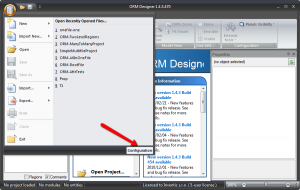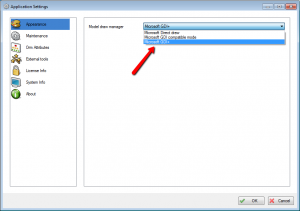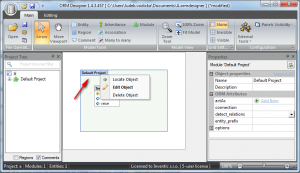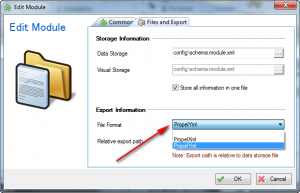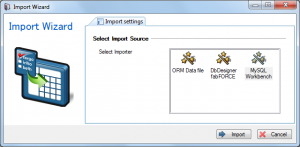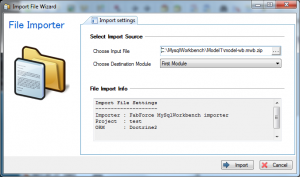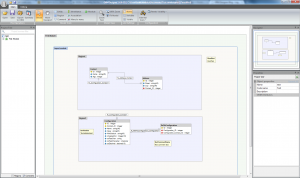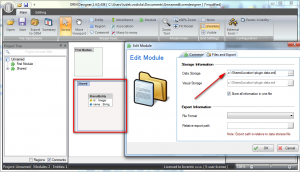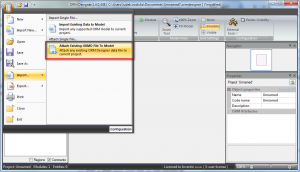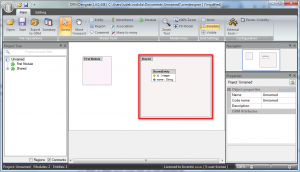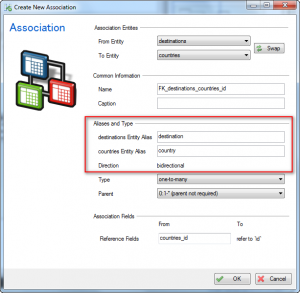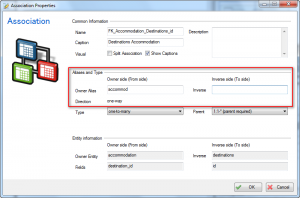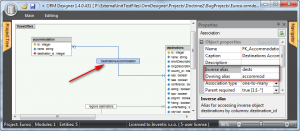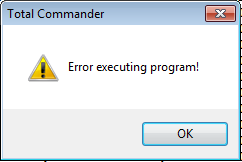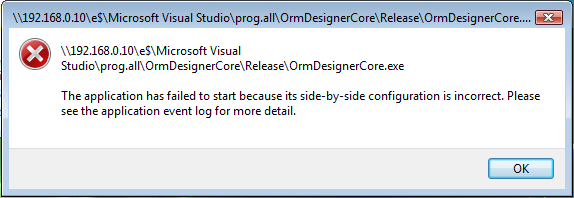The simplest way how to start using ORM Designer with your current Doctrine2 model is to use an import doctrine2 model function. Currently is available only import from Doctrine2 XML schema files. If you have your model defined in anotation or using YAML files, please convert it to XML files. After that, follow next step-by-step instructions.
Import a new project from ORM
In a ribbon menu select Import New… and then Import Project from ORM.

In Import Project Wizard choose your project name and a root directory of your project where are your Doctrine2 XML files stored. As MVC framework choose Without Framework and as ORM choose Doctrine2 as shown on this screenshot.

After an import confirmation ORM Designer starts searching for your files and import them to new ORM Designer model.

In our example we import unit-testing model from Doctrine2 repository called CMS. When import procedure is over, you will see model like this.

After that you can start enjoying ORM Designer in your work with Doctrine2 model.
## More details about using ORM Designer with Doctrine2
Using of Doctrine2 in ORM Designer is very similar to using ORM Designer with PHP ORM Doctrine framework. For more information please look at ORM Designer and Doctrine framework page.
Supported Doctrine2 properties
Currently ORM Designer supports all properties from Doctrine2 except inheritance, which will be implemented during next months. All supported properties are based on official Doctrine2 XML schema. You can edit all properties simply by selecting the object and enter value to correspond field.

There are lot of properties which can be edited for every type. Here are screenshots of property editors for entity, field, association, many to many association.




Download ORM Designer with Doctrine2 support
If you want to download ORMD with Doctrine2 support, please download latest version from our site http://www.orm-designer.com/download-orm-designer. If you find any inconsistency or bug, please let us know.
Appendix: Supported Doctrine2 properties and behaviors
Supported Doctrine2 core properties
| Object |
Property |
| Project |
Name, CodeName, Description |
| Module |
Name, Description |
| Entity |
Name, Description |
| Field |
Name, Type, Size, Required, Unique, Primary key, Auto increment, Default value, Enum values, Description |
| Association (1:m ) |
Name, Reference columns, Owning alias, Inverse Alias, Association type, Parent required |
| Index |
Name, Unique, Indexed columns |
| Many to Many associtaion |
M:N Entity, First and second entity, Alias to first and second entity |
Supported Doctrine2 ORM properties
| Object |
Property |
| Module |
namespace |
| Entity |
db table,schema,repository-class,inheritance-type,export-file-name,change-tracking-policy,lifecycle-callbacks |
| Field |
db column,version,scale,precision,column-definition,generator, generator strategy,sequence-generator,sequence-name,allocation-size,initial-value |
| Associtaion (1:m) |
on-delete,on-update,owning side/inverse side, fetch,orphan-repoval,cascade,order-by |
| Many to Many Association |
join-table-schema,fetch,on-delete,on-update,cascade,order-by |
| cascade-types |
cascade-all,cascade-persist,cascade-merge,cascade-remove,cascade-refresh |
Appendix: Currently unsupported features for Doctrine2
ORM Designer currently doesn’t support inheritance in any level of designing (visual, editing, import, export).
Iheritance for Doctrine2 and other ORM frameworks will be implemented in next few months.
Currently not supported XML tags from Doctrine2 schema:
- discriminator-column
- discriminator-mapping
- discriminator-map
- mapped-superclass




